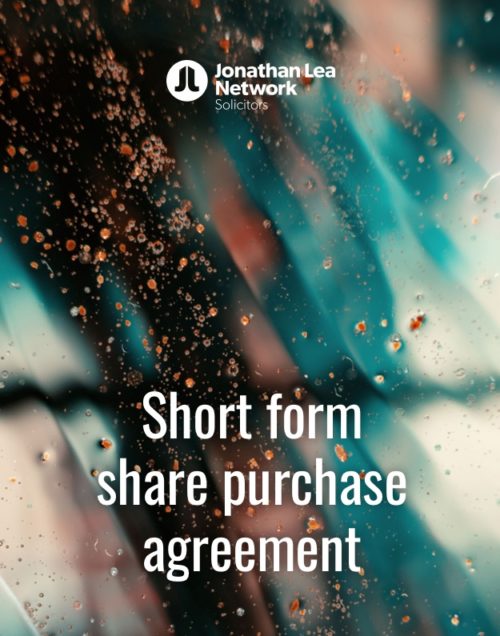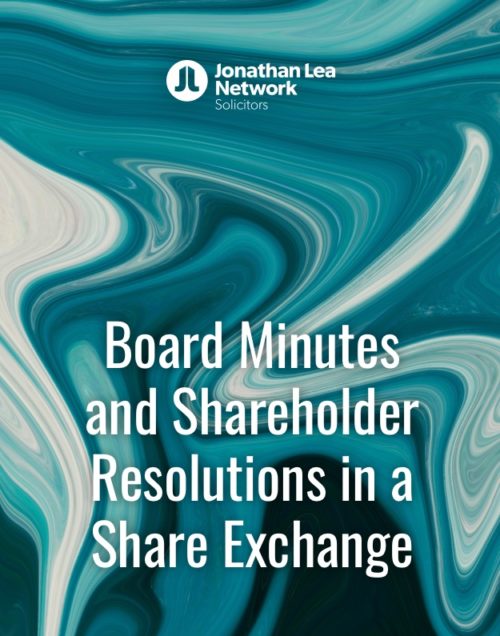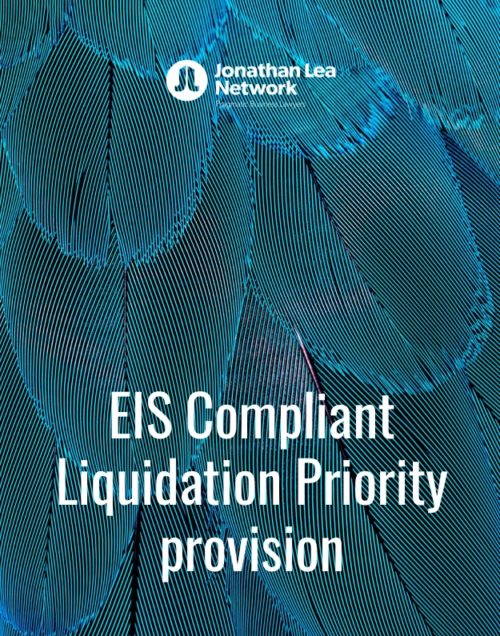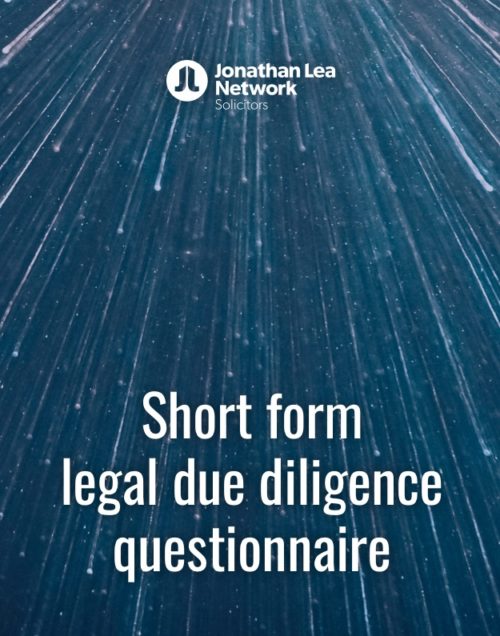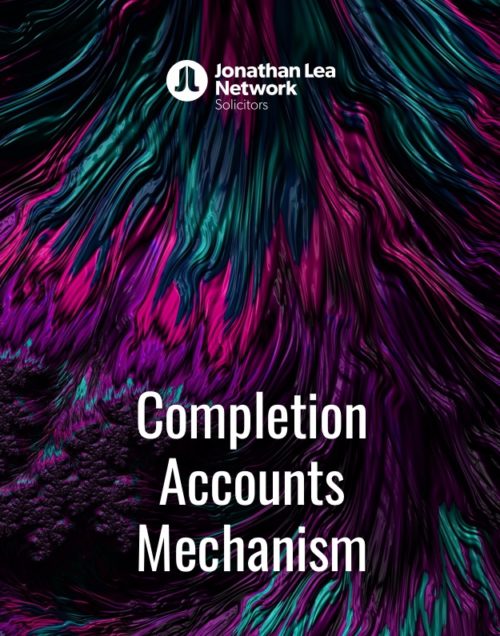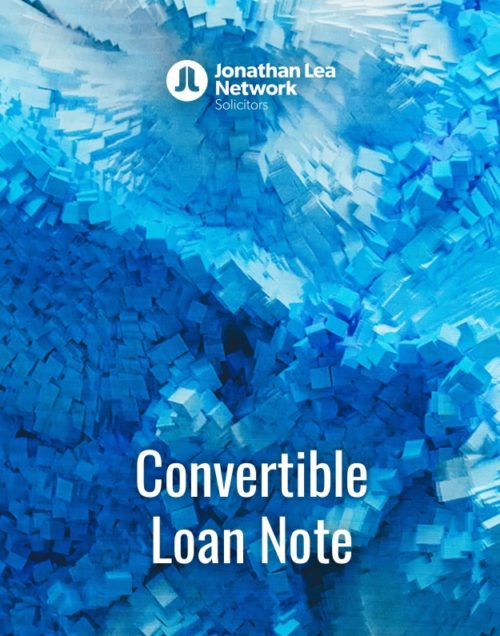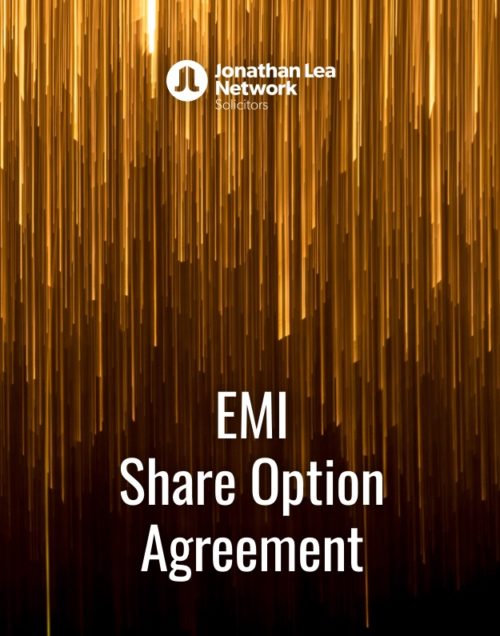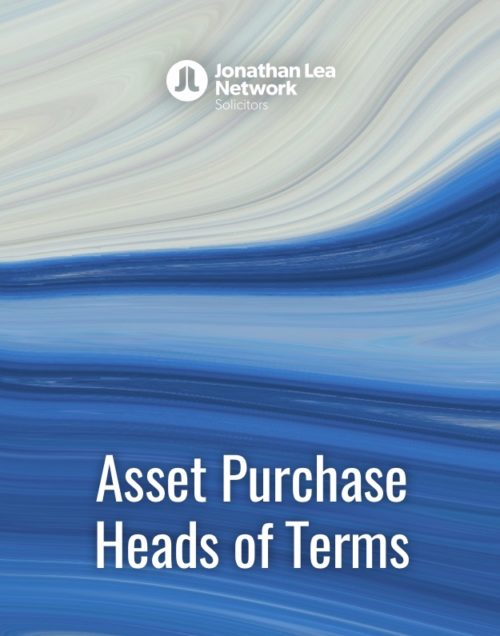Template board minutes and written shareholder resolution to approve share buy back
£11.99
These products constitute easily adaptable board minutes and a written shareholder resolution which can be used by a private company to approve an off-market share buy back out of distributable profits, together with a set of tailored guidance notes which aim to offer useful insights and set out how to correctly fill-out the template documents.
The board minutes and written shareholder resolution have been drafted with certain assumptions in mind and will therefore not be relevant to every scenario. You should therefore read our guidance notes to determine whether the template documents can be adapted to fit your proposed transaction before purchasing.
Further down the page are our guidance notes relating to this template which you will also receive as a separate document when you buy the product.
Guidance notes for template board minutes and written shareholder resolution relating to the off-market buy back of shares out of distributable profits
Our template board minutes and written shareholder resolution can be used by a private company to approve an off-market share buy back out of distributable profits.
Your input is required at the parts of the board minutes and written shareholder resolution highlighted in yellow and the wording inside the square brackets which we have included explains clearly the information that should be inserted. You are advised to fill in the wording in square brackets in lower case unless directed otherwise. Any figures should be inserted in numerical form. The brackets should be removed after the amendments are made (so as to create ‘final form’ versions which are ready for execution).
Board minutes breakdown
This document has been drafted on the following assumptions:
- The repurchasing company is a private limited company with a share capital.
- The company’s articles of association do not contain any restrictions or prohibitions on share buy backs (note that a company will be prevented from repurchasing its own shares if there are restrictions/prohibitions in its articles – this is confirmed in section 690(1) (b) of the Companies Act 2006 (“CA 2006”).
- Where there is more than one selling shareholder, the company will enter into a separate off-market buy back contract with each selling shareholder, on the same terms, and a pro forma version of the contract is tabled at the board meeting.
- The purchase is not for the purposes of or pursuant to an employees’ share scheme (such as an enterprise management incentive (EMI) share option scheme).
- The shares repurchased by the company will be immediately cancelled as opposed to being held as treasury shares.
The key aspects of the board minutes are expanded upon below so as to offer insights and assist you with completing the template.
Paragraph one (‘Chairperson’)
This wording may not be necessary if the chairperson of the company is present at the meeting and is also to chair it. However, it is often included in board minutes for the sake of clarity. If the chairperson of the company is interested in the business to be conducted at the meeting, it may be appropriate for another member of the board to chair the meeting.
Paragraph three (‘Interests in proposed transactions and/or arrangements with the company’)
Paragraphs 3.1 and 3.2 are alternatives and you will need to choose one and delete the other depending on the circumstances of the company/transaction. Paragraph 3.2 should be used where none of the company directors have a direct or indirect interest in any way in the proposed transaction (i.e. where the seller is not a director of the company or related to / associated with a director of the company).
If, for example, one of the directors attending the meeting is having his/her shares bought back and cancelled by the company as part of the proposed transaction, then paragraph 3.1 would need to be used instead of paragraph 3.2 as the director would have a direct interest in the proposed transaction and would therefore be required to declare it in accordance with section 177 of the CA 2006 and the company’s articles of association. Alternatively, if a director was having his/her shares bought back and cancelled by the company as part of the proposed transaction and his/her husband/wife was also a director of the company, the husband/wife would also need to make a declaration of interest as they would have an indirect interest in the proposed transaction under such circumstances.
In respect of paragraph 3.1, it is not essential to include a table in the board minutes setting out each director’s interests, however, as section 177 of the CA 2006 requires an interested director to declare both the nature and extent of his/her interest, including such a table may be helpful in showing that the interests have been properly considered and declared. Note that under section 177(3) of the CA 2006, a director must also make a further declaration of interest to correct any inaccuracy in an earlier declaration of interest, or to correct an incomplete earlier declaration.
When preparing the board minutes to approve the proposed transaction with the company, select the paragraphs that reflect the declarations of interest made by the directors at the meeting. If the board meeting has been convened solely to approve a particular corporate transaction (i.e. a share buy back), it may not always be the appropriate place at which to record a director’s interest in an existing transaction or arrangement under section 182 of the CA 2006.
Paragraph 3.3 is highlighted and is therefore optional depending on the circumstances. Section 184(5) (a) of the CA 2006 provides that a declaration made by written notice under section 184 is deemed to form part of the proceedings at the next meeting of the directors after the notice is given. However, it is good practice to draw the notice to the attention of the directors present at the meeting so as to ensure that they are all aware of the relevant director’s interests.
Therefore, where any of the directors are making a declaration of interest in writing in accordance with section 184 of the CA 2006, paragraph 3.3(a) should be included in the board minutes. Paragraph 3.3(b) should be included where general notice of a declaration of interest is made by one of the directors in accordance with section 185 of the CA 2006.
Paragraph 3.4 – it may be the case that, where the company has provisions in its articles of association for dealing with the management of directors’ conflict situations (including the terms on which the board may authorise a conflict), the board has imposed particular restrictions on a director as part of its authorisation of a director’s potential conflict. For example, under section 175 of the CA 2006, the independent directors may decide to authorise a situation whereby a director is also a director of a potential supplier to the company’s business, but the terms of their authorisation may include a prohibition on the director in question from voting on decisions relating to the proposed contracts between the company and the supplier.
The wording in square brackets in paragraph 3.4 highlights that it may not always be the case that a director can vote and form part of the quorum, even where that is provided under the articles. You must therefore consider, in each particular case, whether there are any restrictions that would prevent any of the directors from counting in the quorum or voting on any of the business to be considered at the meeting.
Paragraph four (‘Business of the meeting’)
Please note that paragraphs 4.1 and 4.2 are alternatives, and you must therefore choose the applicable paragraph and delete the other one.
Where the company is repurchasing shares from a single shareholder, you should include paragraph 4.1 in the board minutes.
Where the company is repurchasing shares from multiple shareholders, you should include paragraph 4.2.
Paragraph five (‘Documents produced to the meeting’)
As stated above, where there is more than one selling shareholder, the company will enter into a separate off-market buy back contract with each selling shareholder, on the same terms, and a pro forma version of the contract is tabled at the board meeting.
Therefore, at paragraph 5(a) of the minutes, you can delete the words “pro forma” which are highlighted and contained within square brackets if the proposed transaction only involves one selling shareholder.
Again, at paragraph 5(a), if there is only one selling shareholder then use the wording which states “…to be entered into by the Company and the Seller”. If there is more than one selling shareholder, use the second optional sentence which states “…a separate copy of which is to be entered into by the Company and each of the Sellers in respect of the Shares that each Seller is selling”.
Where a company is proposing to purchase its own shares using distributable profits (as is contemplated within our template board minutes), it must be able to justify the distribution by reference to relevant accounts (in accordance with section 836 of the CA 2006). Therefore, at paragraph 5(b) you must confirm whether the company’s latest annual or interim accounts were tabled at the meeting to evidence that the company has sufficient distributable profits to buy back the shares.
At paragraph 5(c), where there is one selling shareholder, use the wording in the square brackets which states: “…a written resolution of the Company approving the Purchase Contract”, and where there is more than one selling shareholder, use the wording in the square brackets which states: “…the written resolutions of the Company approving the separate Purchase Contracts to be entered into with each Seller”.
The list of documents produced to the meeting will depend on whether the off-market buy back contract is to be approved by shareholders in general meeting or by means of a written resolution. Our template minutes have been drafted on the assumption that the off-market buy back contract is to be approved by means of a written resolution, and will therefore not be suitable where the company is proposing to approve the contract by shareholders in general meeting.
Note that, in accordance with sections 695(2) of the CA 2006, a member (alternative term for shareholder) holding shares to which the resolution relates is not an eligible member and, therefore, cannot vote on a written resolution.
In addition, under section 695(3) of the CA 2006, a resolution passed at a general meeting is not effective if a member holding shares to which the resolution relates exercises the voting rights carried by those shares (whether on a poll or on a vote by a show of hands) and the resolution would not have been passed if those votes had not been exercised.
This means that where a company has a sole shareholder, the buy back must be approved by means of a resolution passed at a general meeting (albeit that there will only be one shareholder at such meeting). Similarly, where a company with two or more members is proposing to buy back shares from all of its members, the resolution would need to be passed at a general meeting or, alternatively, there could be separate written resolutions in respect of each buy back.
Consequently, where there is more than one selling shareholder, it may be preferable to set out the repurchase of shares from each selling shareholder in separate written resolutions, or to hold a general meeting so that each selling shareholder is able to vote on the resolution in respect of its shares that are not being repurchased.
Paragraph 6 (‘Resolutions’)
In respect of paragraphs 6.2(c) and (d), note that under section 270(1) of the CA 2006 private limited companies are not required to have a company secretary, although they may choose to do so. If the company does not have a company secretary, insert the name of the person who has been given responsibility for administrative functions that would otherwise be carried out by the company secretary (such as a director, a specified employee or an agent or advisor of the company).
In paragraph 6.2(c), amend the word “Seller[s]” depending on whether there is one or more than one selling shareholder.
At paragraph 6.3(a), if there is only one selling shareholder then include the wording in the first set of square brackets. If there is more than one selling shareholder then include the wording in the second set of square brackets.
Paragraph 7 (‘Filing’)
Within 28 days of the share being delivered to the company, the company must file Form SH03 at Companies House.
Given that our template board minutes envisage the shares being cancelled immediately, as opposed to being held as treasury shares, Form SH06 must also be filed at Companies House. Note that, unlike shares purchased out of capital or from the proceeds of a fresh issue of shares, own shares purchased by a private company out of distributable profits are capable of being held in treasury (as per section 724 of the CA 2006).
Note importantly that before the Form SH03 is filed at Companies House, it must be sent to HMRC for stamping (with the stamped version then being filed at Companies House). HMRC requires the signature on Form SH03 to be dated, and the form must also state the purchase price of the shares to enable HMRC to check that the correct amount of stamp duty has been paid.
Under UK law, when an individual or company buys shares and the price paid for such shares exceeds £1,000, the Form SH03 (as opposed to a stock transfer form) recording the buy back of the shares must be stamped by HMRC and stamp duty must be paid in relation to those shares purchased. Stamp duty on shares is payable at a rate of 0.5% of the total consideration paid for the shares, rounded up to the nearest £5.
So, for example, if a selling shareholder had their shares bought back by the company for £2,000, the total stamp duty payable would be £10.00 (given that 2,000 / 100 X 0.5 = 10).
It is the buyer’s responsibility/obligation to pay stamp duty on shares, and so the company will be liable to meet the cost of any applicable stamp duty.
Under section 707(6) of the CA 2006, failure to file the stamped Form SH03 at Companies House constitutes an offence by every officer of the company who is in default.
Note that on 25 March 2020, HMRC announced temporary changes to the process for stamping and filing Form SH03 due to the Covid-19 pandemic. HMRC has confirmed that an electronic version of Form SH03 should be sent to HMRC by email (to email address stampdutymailbox@hmrc.gov.uk), rather than sending the form for stamping by post. HMRC will accept e-signatures on forms while this measure is in place. HMRC will then issue a letter instead of stamping the form. Companies House will accept and register an unstamped Form SH03 where it is accompanied by such letter from HMRC confirming that the correct duty has been paid. The letter will not appear on the public register.
If the shares are cancelled immediately (as is envisaged by our template minutes) as opposed to being held in treasury, a notice of cancellation must be filed with Companies House within 28 days beginning with the date that the shares are delivered to the company (as per section 708 of the CA 2006). Form SH06 must be used for this notification, which includes a statement of capital.
Failure to comply with section 708 constitutes an offence by the company and every officer in default (as per section 708(4) of the CA 2006.
Where an off-market buy back contract is approved by an ordinary resolution (i.e. is passed by shareholder holding more than 50% of the company’s shares) under section 694 of the CA 2006 (which is likely to be the case in the majority of buy backs), there is no need to file the ordinary resolution with Companies House.
Note that section 694 of the CA 2006 just states that the terms of the buy back contract must be authorised by a “resolution” of the company before the contract is entered into. Note importantly that section 694 used to provide specifically that a special resolution of the company’s shareholders was required in order to approve an off-market buy back contract. However, this section has subsequently been amended by virtue of The Companies Act 2006 (Amendment of Part 18) Regulations 2013 (S.I. 2013/999), regulation 5(a), and the word “special” has now been omitted from section 694(2) (a), (b) and section 694(4) of the CA 2006.
We know that it is an ordinary resolution that needs to be passed because section 281(3) of the CA 2006 provides as follows: “Where a provision of the Companies Acts – (a) requires a resolution of a company, or of the members (or a class of members) of a company, and (b) does not specify what kind of resolution is required, what is required is an ordinary resolution unless the company’s articles require a higher majority (or unanimity)”.
Where, however, the buy back contract is approved by a special resolution (because, for example, the company’s articles require a higher majority or unanimity) or the company’s articles have been amended by special resolution to amend any provision restricting or prohibiting a share buy back, such resolution must be filed at Companies House within 15 days of being passed (in accordance with section 29 and 30 of the CA 2006). If the company’s articles have been amended, a copy of the new articles must also be filed at Companies House within 15 days of the amendments taking effect (as per section 26(1) of the CA 2006).
Written shareholder resolution breakdown
Where a company is proposing to purchase shares off-market, it must approve the contract for the purchase by a resolution of the company (unless the purchase is for the purposes of, or pursuant to, an employees’ share scheme) (as per section 694 of the CA 2006).
As stated above, given that the type of resolution required under section 694 of the CA 2006 is not specified, an ordinary resolution will suffice unless the company’s articles require a higher majority or unanimity (as per section 281(3) of the CA 2006). Note that there is no requirement to approve the buy back in general, only the purchase contract.
In accordance with section 696(2) (a) of the CA 2006, a copy of the buy back contract must be sent to each member at the same time as (or before) the written resolution is sent.
Under the ‘Agreement’ section, you can insert as many signature blocks as required depending on the shareholder base of the company.
If there are multiple selling shareholders, then this written shareholder resolution will need to be adapted and circulated to all eligible shareholders so as to approve each separate buy back contract and all resolutions will need to be filed at Companies House as explained above.
The circulation date is the date on which the written resolution is first sent to a member (as per section 290 of the CA 2006). The lapse date will be the end of 28 days beginning with the circulation date unless a different lapse date is specified in the company’s articles (as per section 297 of the CA 2006).
A member holding shares to which the resolution relates is not an eligible member and, therefore, cannot vote on the resolution (as provided by section 695(2) of the CA 2006). This means that where a company is proposing to buy back shares from more than one shareholder and includes the proposed buy backs from each selling shareholder within the same resolution, none of the selling shareholders would be able to vote on such resolution. In such circumstances, it is advisable to set out the buy back of each shareholder in separate resolutions or pass a single resolution at a general meeting (where selling shareholders would be able to vote on a poll in respect of their shares that are not being bought back (section 695(3) CA 2006).
As explained above, where a company has a sole shareholder, the buy back must be approved by means of a resolution passed at a general meeting (albeit that there will only be one shareholder at such meeting) as the sole shareholder would not be an eligible member (section 695(2) CA 2006).


